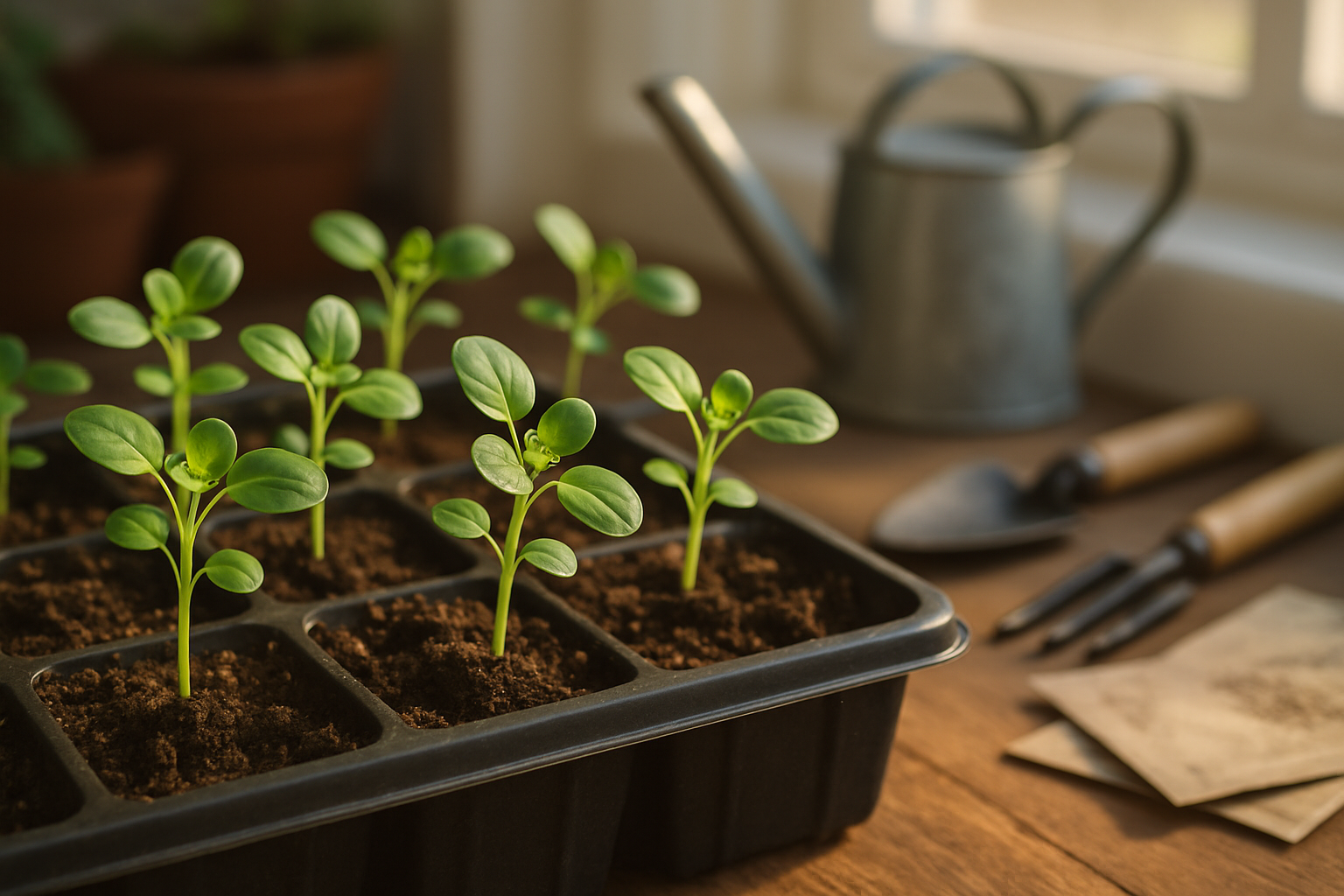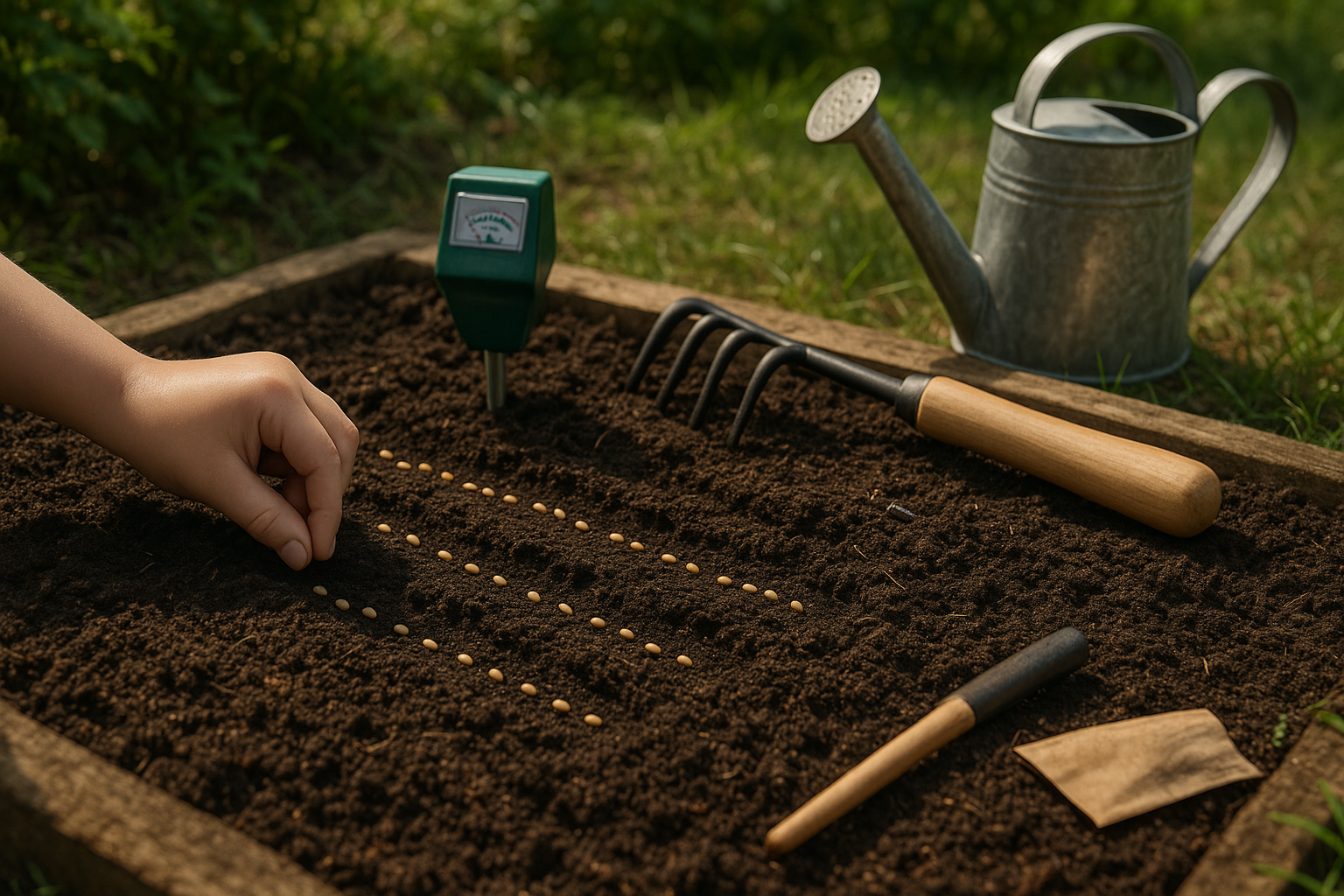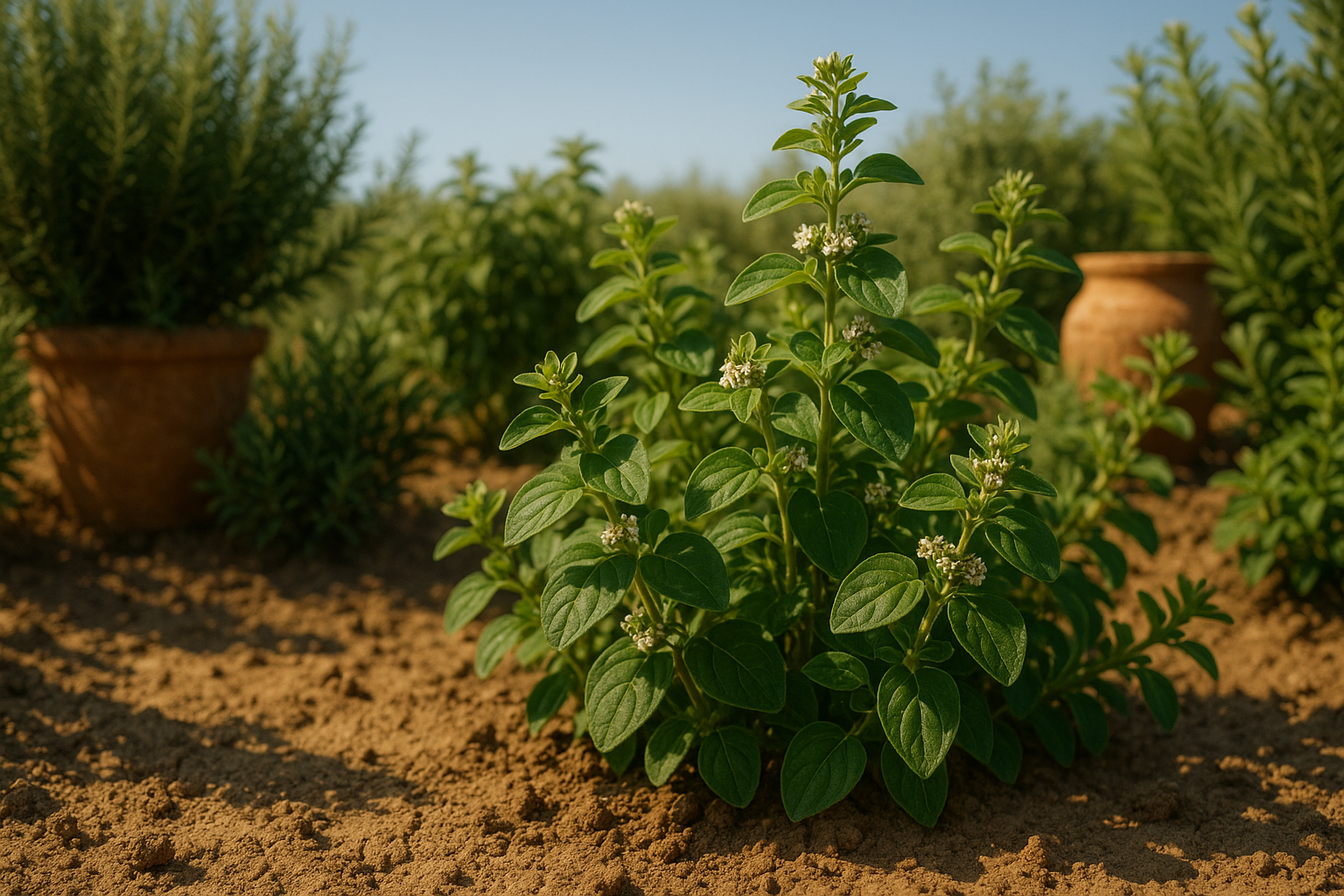Introduction: Why Grow Marjoram in Hot or Dry Regions?
If you’re dreaming of a lush herb garden despite living in an arid zone, growing marjoram in hot climate conditions could be your secret weapon. Marjoram is not only popular worldwide for its sweet, floral flavor that enhances everything from salads to roasted vegetables, but it also offers health benefits like anti-inflammatory and digestive properties. While many herbs wilt or struggle when temperatures soar and rainfall is scarce, marjoram thrives where others fail, thanks to its Mediterranean roots and natural resilience.
With low water needs and a strong tolerance for intense sun, marjoram is perfect for gardeners in hot or dry regions who often face drought, poor soil, or relentless sunlight. Even with minimal irrigation and sandy, challenging soils, marjoram will continue to reward you with fragrant growth throughout the season. Whether you want to spice up your meals sustainably or add a hardy herb to your drought-tolerant garden, marjoram stands out as a flavorful, healthful, and practical choice for the toughest climates.
Understanding Marjoram in Hot Climate Conditions

Marjoram is well-suited for hot, dry climates thanks to its Mediterranean origins, thriving best when temperatures stay between 65°F and 80°F (18°C–27°C). While marjoram enjoys warmth and can handle the sun, it thrives with at least six hours of full sunlight daily.
This herb’s leaves are rich in essential oils, which not only add flavor but also help reduce water loss, making it fairly drought-tolerant compared to more delicate plants. In practical terms, marjoram can handle missing water for a few days—once its roots are established, it bounces back after dry spells and doesn’t require heavy, daily irrigation.
However, even hardy marjoram has its limits. Prolonged temperatures above 95°F (35°C), especially when combined with dry winds or heat waves, can stress the plant. Symptoms like leaf curling, browning at the tips, or slowed growth usually appear if roots overheat or the soil remains too dry for too long.
Similarly, overly sandy or fast-draining soil can cause marjoram to struggle by depriving it of the consistent, moderate moisture it prefers. Protecting marjoram during extreme midday heat—using shade cloth, mulching to keep root zones cooler, or watering early in the morning—helps keep it healthy.
Gardeners in desert or arid regions should ensure good airflow but avoid creating wind tunnels that may further dry out the leaves. With thoughtful placement and attention to these needs, marjoram can be a reliable, fragrant addition even in the hottest gardens.
Soil Preparation: Setting the Foundation for Success
Creating the right soil environment is crucial when growing marjoram in hot climate regions, as the herb’s roots are very sensitive to excess moisture and can easily develop root rot if the soil remains soggy. For the healthiest plants, well-drained soil should be your top priority.
If your garden soil is naturally dense or heavy with clay, incorporate coarse sand or small gravel to improve drainage—aim for these materials to make up at least one-third of your mix. Also, blend in high-quality organic compost to boost soil fertility without making it too dense. Compost helps retain the right level of moisture and supplies essential nutrients that tend to deplete quickly in hot or arid areas.
Another key step is to check your soil’s pH, since marjoram prefers a slightly alkaline environment with a pH between 6.5 and 7.5. You can easily test this at home with a kit from a garden center. If your soil is too acidic, sprinkle garden lime or crushed eggshells over the area and work them in thoroughly. If it’s too alkaline, gently acidify it with peat moss or a light application of elemental sulfur. Always mix amendments deeply—marjoram roots can penetrate 8 to 12 inches—so take the time to dig and blend materials throughout that depth.
For container growers, opt for a cactus or succulent potting mix and add a handful of compost, ensuring the pot has wide drainage holes. This careful preparation gives your marjoram the foundation it needs to stay healthy and thrive, even in challenging hot and dry climates.
Watering Strategies for Arid Regions
Successfully growing marjoram in a hot climate depends on a smart watering routine tailored to arid conditions. Marjoram prefers soil that is moist but never soggy, so deep, infrequent watering is essential. In hot, dry regions, aim to water once or twice a week in the early morning, allowing the soil to absorb moisture before the midday heat speeds up evaporation. Adjust your watering schedule based on rainfall and temperature—always check soil moisture with your finger; if the top inch feels dry, it’s time to water.
To boost water efficiency, apply a two- to three-inch layer of organic mulch—such as straw, shredded leaves, or bark—around the base of your plants. Mulch acts as a natural barrier that locks in moisture, shields roots from temperature spikes, and discourages weed growth.
Watch for signs of overwatering, like yellowing leaves, wilting despite wet soil, or root rot. Marjoram is especially sensitive to soggy roots, so ensure your soil drains well. Conversely, underwatered marjoram will wilt, develop crispy or browning leaf edges, and show slowed growth. If leaves look dull, brittle, or your plant droops frequently between waterings, it likely needs more hydration.
Remember, during extreme heat, you may need to check your plants daily, but always prioritize checking the soil over following a strict schedule. With careful attention and a protective layer of mulch, marjoram can thrive even in the most challenging hot climates.
Planting and Spacing: Maximizing Airflow and Growth

When growing marjoram in hot climates, timing and spacing are key to ensuring healthy, productive plants. Aim to plant marjoram early in the spring, once temperatures consistently stay above 65°F (18°C), but before the peak summer heat arrives. In very hot regions, consider starting seeds indoors and transplanting seedlings outdoors during cooler parts of the day, like early morning or late afternoon, to help them establish with less stress.
Proper spacing is essential: plant marjoram 12-18 inches apart to promote good airflow between plants. This spacing encourages strong growth and helps reduce the risk of mold and mildew, which can develop in crowded, humid conditions—even in dry areas where irrigation is used.
If you have limited yard space or poor soil conditions, marjoram is a great option for container gardening. Use pots that are at least 8-10 inches wide and make sure drainage holes are clear to prevent waterlogging, especially since containers on hot patios can cause roots to overheat. Place containers where they get morning sun and light afternoon shade to protect tender growth from intense midday rays. Rotate containers regularly for even light exposure and keep a close eye on soil moisture, as containers dry out faster in hot weather.
Caring for Marjoram in Hot Climate
Caring for marjoram in a hot climate means planning ahead to protect your plants from the stress of heatwaves and droughts. Shade is your best friend when the sun is relentless: use simple row covers made from lightweight fabric to diffuse harsh light and keep the soil cooler. These covers are easy to set up and can be moved as the sun shifts throughout the day.
Alternatively, plant marjoram near sunflowers, corn, or other tall companions that naturally cast shade during the hottest hours. If space allows, set up temporary structures like bamboo frames or lightweight shade cloth, especially during peak heat periods.
Pruning also plays a crucial role in maintaining plant health—trim marjoram regularly to encourage bushy growth and better airflow by cutting stems just above a leaf node. Harvest frequently, but never cut more than a third of the plant at once; this helps roots stay strong and prevents the plant from bolting or becoming woody.
Dry conditions may attract spider mites, thrips, or powdery mildew, so regularly check under leaves for tiny webs or discolored spots. If you spot pests, wash them off with a spray of water or introduce beneficial ladybugs if the problem persists. To avoid disease, water at the plant’s base early in the morning so the foliage dries quickly, and thin nearby plants to maintain good air circulation.
By combining these practical strategies, your marjoram can thrive even when the weather gets tough.
Harvesting and Using Marjoram Grown in Hot or Dry Conditions
Harvesting marjoram in hot climates is best done in the cool of the morning, just after the dew has dried but before the sun becomes harsh. This timing helps preserve the delicate essential oils that give marjoram its signature aroma and flavor. Use sharp scissors or garden shears to snip the stems, aiming to harvest right before the plant flowers for the most robust taste.
In dry environments, marjoram dries quickly—bundle the stems loosely and hang them in a shaded, well-ventilated area. Once fully dry and crumbly, strip the leaves and store them in an airtight container away from direct sunlight.
Another great storage method suited to hot, dry areas is to make marjoram-infused oil: pack freshly cleaned, dry marjoram leaves into a bottle, cover with quality olive oil, and let it infuse for a couple of weeks. This creates a flavorful oil perfect for drizzling over salads or roasted vegetables.
Homegrown marjoram from hot climates is a wonderful addition to Mediterranean dishes—sprinkle it over grilled meats, stir it into soups, or mix it into salad dressings. Its subtle, sweet flavor pairs especially well with tomatoes, beans, and even homemade breads, turning your garden’s harvest into kitchen magic.
Conclusion: Embracing Success with Marjoram in Arid Gardening
Growing marjoram in hot climate conditions can be challenging, but with a few smart strategies, you can enjoy a healthy, thriving herb garden even in dry settings. Choose well-drained soil, water deeply but infrequently, and position your plants to receive morning sun with some afternoon shade if possible. Mulching helps keep roots cool and retain moisture, while regular harvesting encourages fuller growth. If your soil is especially tough, try growing marjoram in pots. Don’t hesitate to give marjoram a chance—even in the hottest, driest spots, this hardy herb can thrive with the right care. Have you grown marjoram in your own dry garden or have tips for beating the heat? Share your questions or experiences in the comments below, and let’s help each other grow better gardens in every climate!
